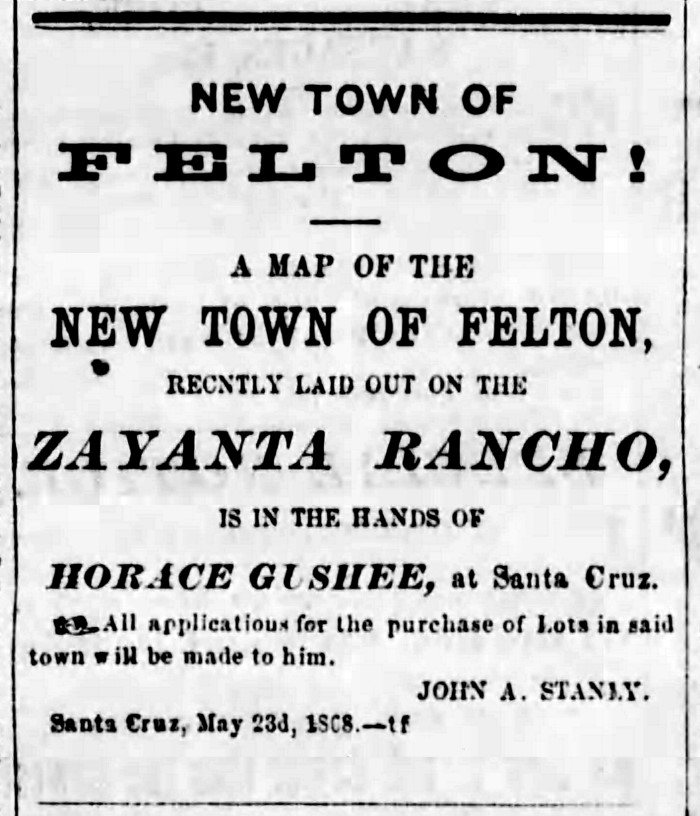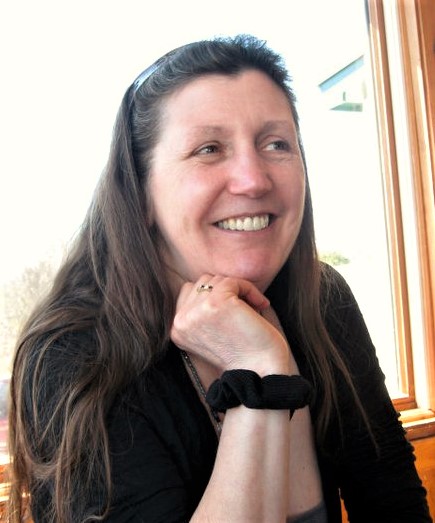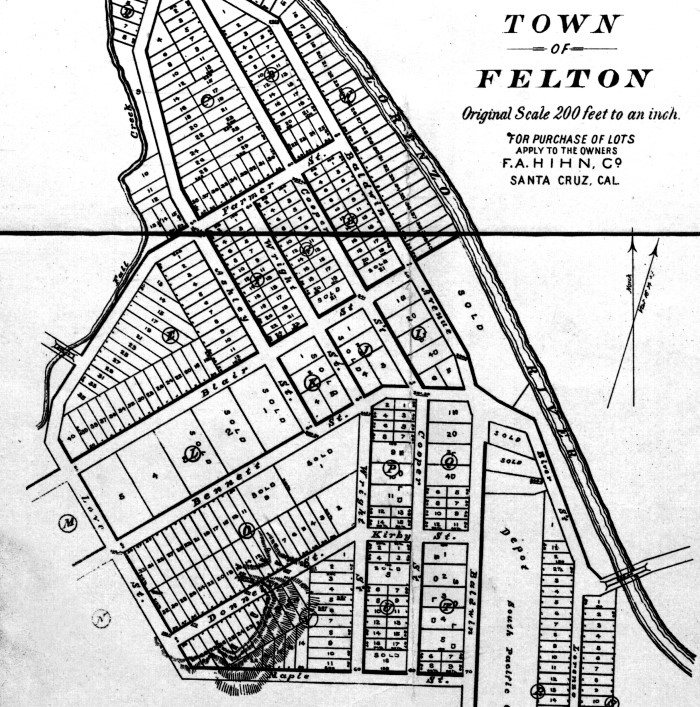Streetwise History: Downtown Felton
By Lisa Robinson
Have you ever thought about how the street where you live got its name? In these articles, we will look at street names in the San Lorenzo Valley and explore the history hidden in their names.
The street names of downtown Felton have changed over time. Some have disappeared completely. Let’s look at some of the changes.
The town of Felton was laid out in 1868 by Edward Stanley. Stanley, a lawyer, had been hired by Isaac Graham to defend his ownership of the Zayante Ranch. On his sudden death, Graham owed Stanley money and Stanley was the recipient of the land in payment for debts due.
The land for the new town, which promised to be the terminus of the new Santa Cruz-Felton railroad, was surveyed by Thomas Wright. The advertisement in the Weekly Sentinel cited Horace Gushee (Gushee Street) as the agent for the purchase of lots.
Stanley transferred one of the lots to Horace Gushee and Joseph Boston (Boston Street), as trustees, for a Protestant Episcopal Church site.
Boston Street ran one block to the west and parallel to Gushee, and no longer exists. It is likely that when the streets of Felton were paved in 1929, it was realized that Boston Street was not actually necessary since all the properties on that street could be accessed from another.
In some ways, the names on the original map of Felton read like a list of members of the Society of California Pioneers of Santa Cruz County, and many of their biographies can be found in Santa Cruz County History Journal Number Four published by the Santa Cruz Museum of Art & History.
In 1871, the land was bought by George Treat who owned the first steam powered lumber mill in the San Lorenzo Valley at the confluence of Gold Gulch and the San Lorenzo River.
Treat had some financial woes and sold the land to Charles McLaughlin with an option that would allow George Treat to repurchase at the same price within a certain time. In 1884, that time was almost up and to help Treat out, Fredrick Augustus Hihn stepped in to purchase the ranch.
On the 1889 Hatch Map, a map compiled by Andrew Jackson Hatch depicting land ownership in rural Santa Cruz County, there are also five inserts depicting sub-divisions owned by entrepreneur F. A. Hihn, including the town of Felton, pictured here.

Streets such as Gushee and Boston do not appear on the map. Neither do they appear on the 1895 Sanborn Fire Insurance maps. Baldwin (now Highway 9), Cooper, and Wright crossed Bennett Street (now Felton Empire). Baldwin was the maiden name of Edward Stanley’s wife Cornelia. Cooper was likely named for Walter Cooper, who was one of the first to construct business buildings in the town. Ashley for Santa Cruz County pioneer Otis Ashley. The first Felton schoolhouse was located on Ashley’s land; his lumber mill was on Fall Creek. Bennett was named for Eben Bennett of the Bennett Lime Kilns on Bennett Creek.
Originally, Kirby Street, named for tanner Richard Kirby, husband of reformer and suffragist Georgiana Bruce Kirby, ended at Boston Street, which no longer exists. From Boston, there was a street named Donneel on the original map (now Kirby) but named Donnell on Hatch’s map likely for the superintendent of the Page, Donnell, and Lee sawmill.
On this map, Hihn Street is named Maple Street, but Hihn Street predates the map. And to add to the confusion, the Sanborn maps show a street named Oak, implying it is between Kirby and Hihn.
In the words of historian Sandy Lydon: “Place names… represent the code to unlocking Santa Cruz County’s rich and varied history… names are always in a state of flux; spellings change, names fall out of favor, places move around on the map, and finally, the reasons for some of the names are forgotten entirely.”

Lisa Robinson is the Collections and Exhibitions Curator at the San Lorenzo Valley Museum.
The San Lorenzo Valley Post is your essential guide to life in the Santa Cruz Mountains. We're dedicated to delivering the latest news, events, and stories that matter to our community. From local government to schools, from environmental issues to the arts, we're committed to providing comprehensive and unbiased coverage. We believe in the power of community journalism and strive to be a platform for diverse voices.





